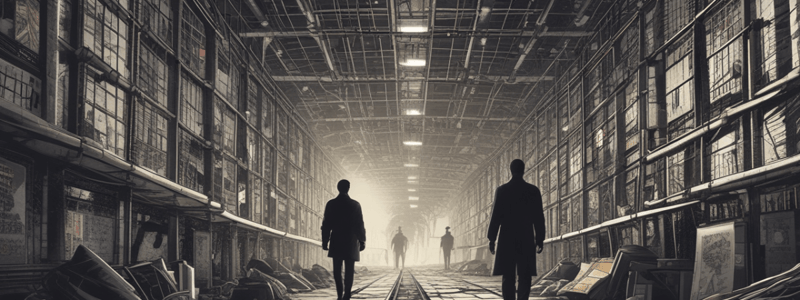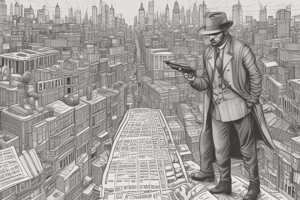Podcast
Questions and Answers
According to Robert Agnew's general strain theory, what is the reason for deviance and crime?
According to Robert Agnew's general strain theory, what is the reason for deviance and crime?
- Individual characteristics
- Cultural norms
- Negative emotions (correct)
- Institutional power imbalance
Which theory explains the high crime rate resulting from the institutional power imbalance in society?
Which theory explains the high crime rate resulting from the institutional power imbalance in society?
- Strain theory
- Anomie theory
- Institutional anomie theory (correct)
- Social disorganization perspective
According to learning theories, how is criminal behavior learned?
According to learning theories, how is criminal behavior learned?
- Through individual characteristics
- Through cultural norms
- Through classical and operant conditioning (correct)
- Through institutional power imbalance
Which theory explains the process of becoming delinquent through exposure to definitions favorable or unfavorable to delinquency?
Which theory explains the process of becoming delinquent through exposure to definitions favorable or unfavorable to delinquency?
What is the concept developed by William J. Wilson and Robert J. Sampson that depends on the level of residential instability and poverty?
What is the concept developed by William J. Wilson and Robert J. Sampson that depends on the level of residential instability and poverty?
Flashcards are hidden until you start studying
Study Notes
- Strain theories suggest that economic conditions affect crime, not individual characteristics.
- Robert K. Merton developed the anomie theory, which emphasizes material success and the disjuncture between culturally accepted goals and the means to achieve them.
- Robert Agnew's general strain theory considers deviance and crime as possible adaptation mechanisms to cope with negative emotions.
- Institutional anomie theory focuses on the institutional power imbalance in society, resulting in a high crime rate.
- Social disorganization perspective explains social disorganization and high crime rates in areas with poor economy, residential instability, and ethnic heterogeneity.
- William J. Wilson and Robert J. Sampson developed the concept of collective efficacy, which depends on the level of residential instability and poverty.
- Learning theories suggest that criminal behavior is learned through classical conditioning, operant conditioning, and social learning.
- Edwin H. Sutherland developed the theory of differential association, which explains the process of becoming delinquent through exposure to definitions favorable or unfavorable to delinquency.
- Structural theories explain the norms and values of delinquent subcultures.
- Albert K. Cohen's theory of blocked opportunity/gang formation suggests that not all lower class individuals turn to delinquent subcultures, and Walter B. Miller's focal concern theory identifies lower class values that cause high delinquency involvement.
Studying That Suits You
Use AI to generate personalized quizzes and flashcards to suit your learning preferences.




